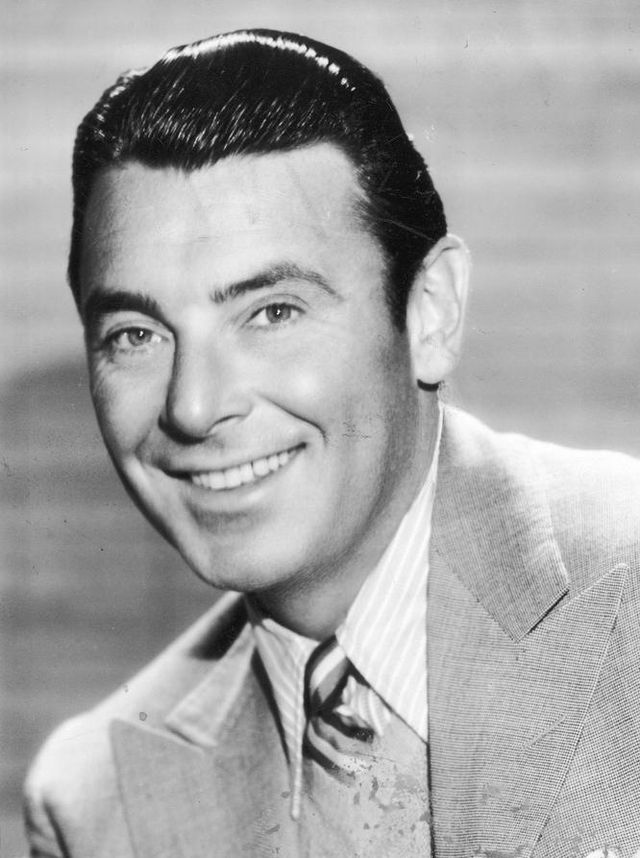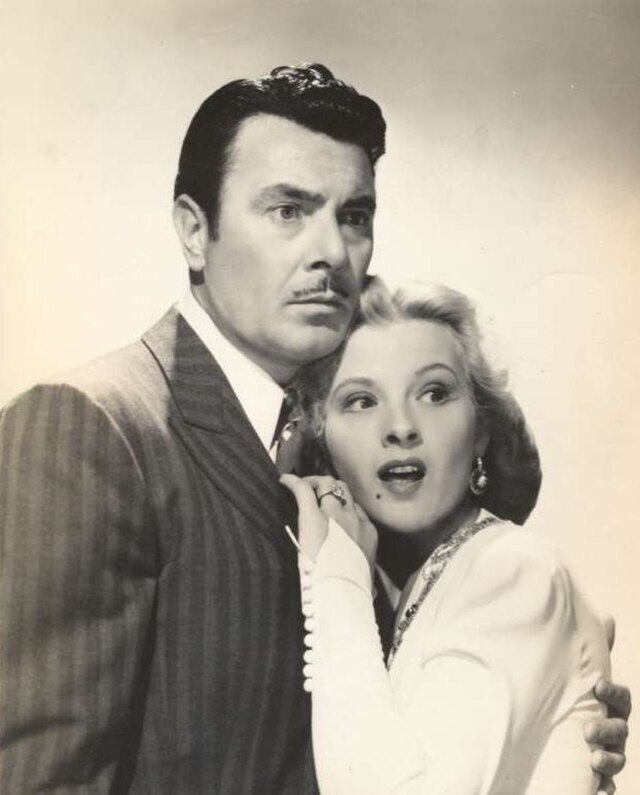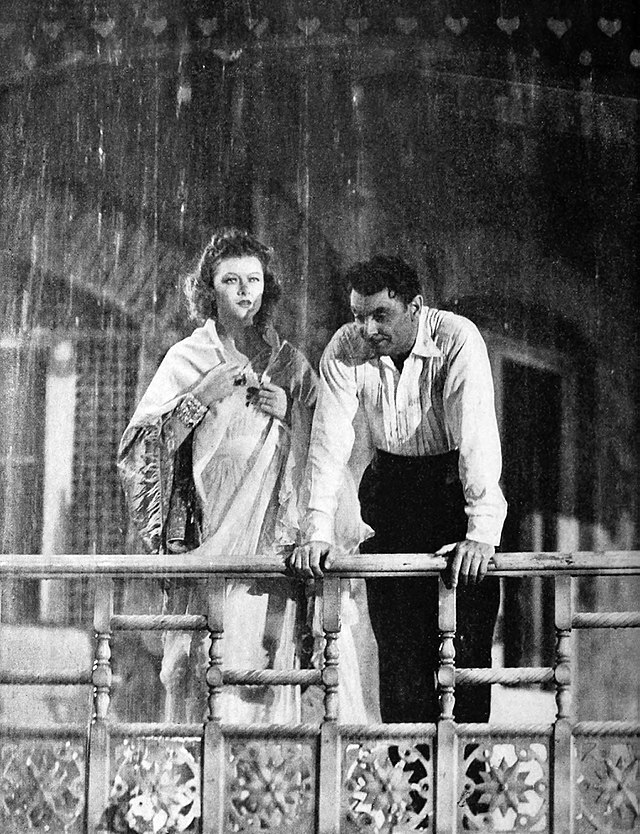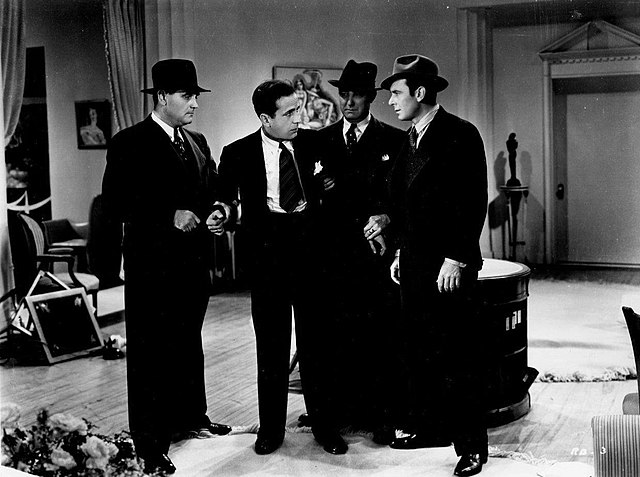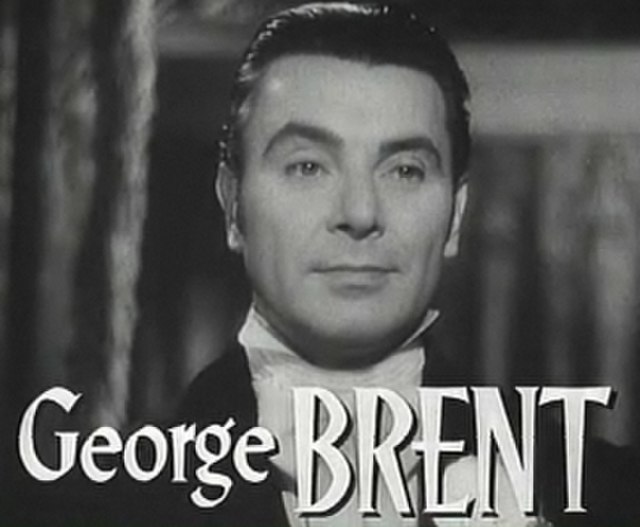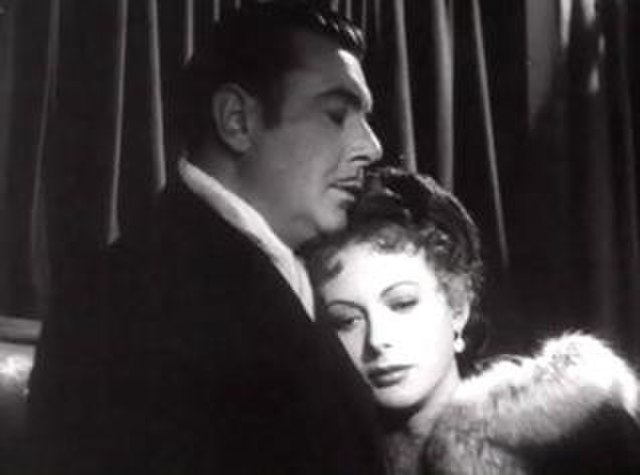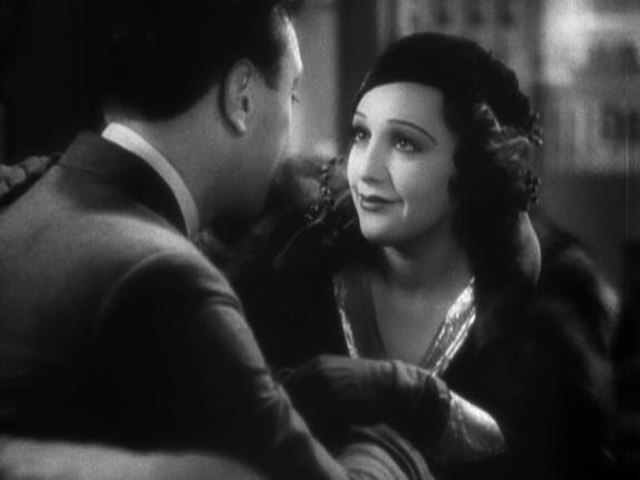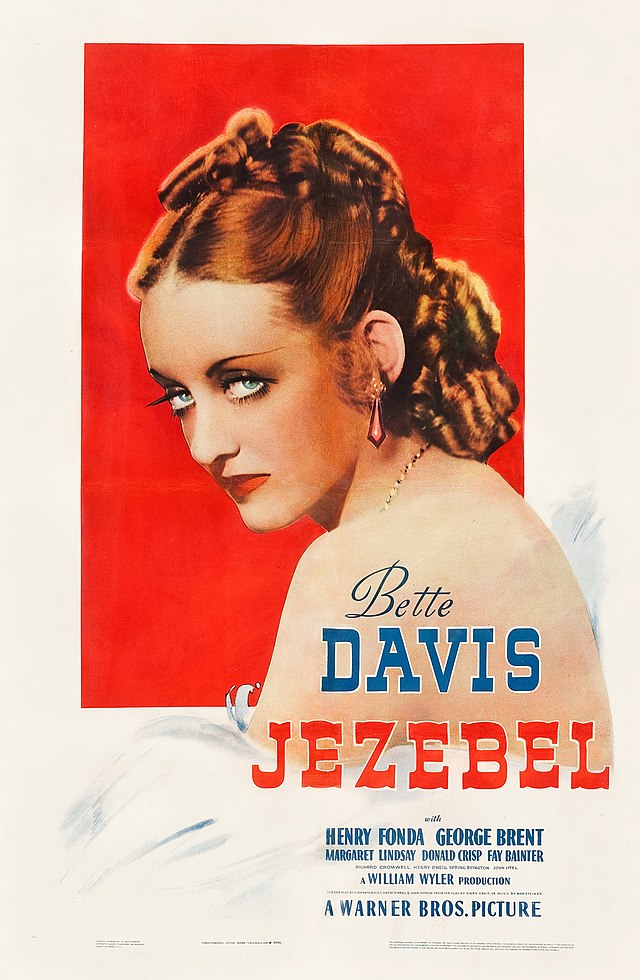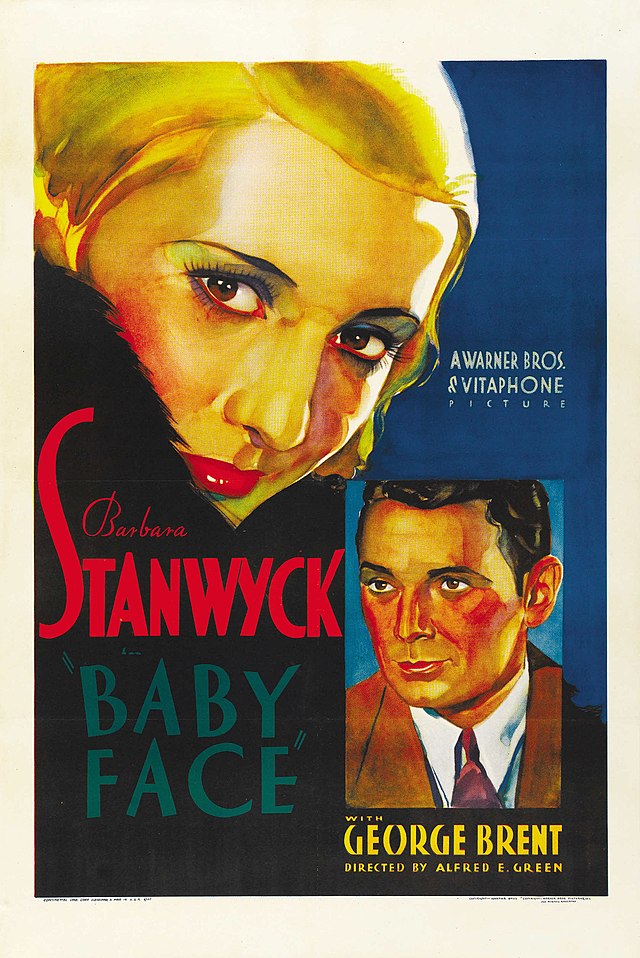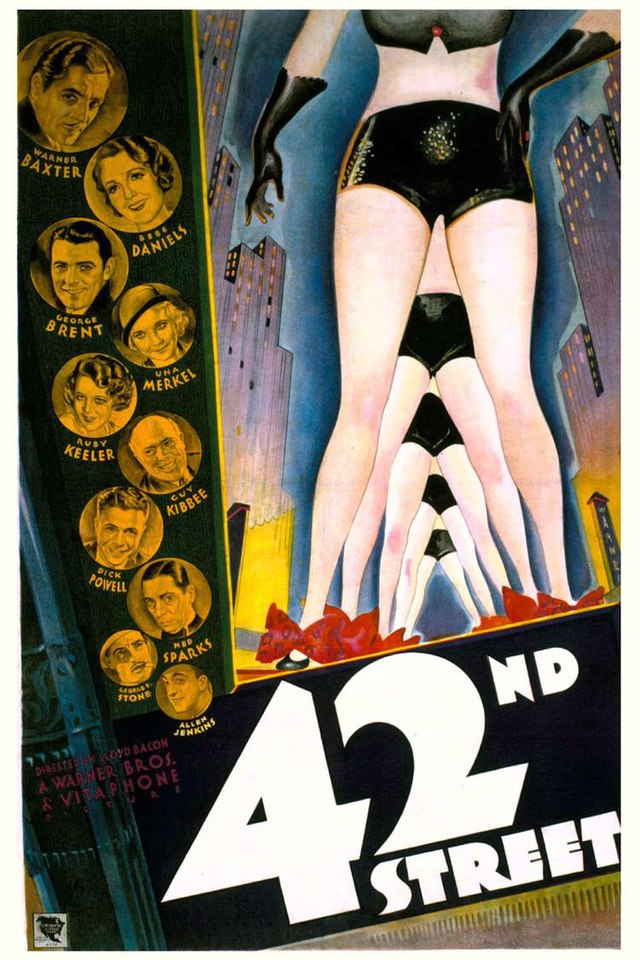George Brent
back| Full Name | George Patrick Nolan |
| Stage Name | George Brent |
| Born | March 15, 1904 |
| Birthplace | Shannonbridge, County Offaly, Ireland |
| Died | May 26, 1979 |
| Buried | San Fernando Mission Cemetery, Mission Hills, Los Angeles, California, USA |
| Married to | Helen Nolan (his first wife, whom he married before coming to the U.S.) - Ruth Chatterton (actress, married from 1932 to 1934) - Constance Worth (actress, married in 1937 for a short time) - Ann Sheridan (actress, married from 1942 to 1943) - Janet Michael (married from 1947 until her death in 1974) |
| Children | Suzanne Brent (with Janet Michael) and Barry Brent (also with Janet Michael) |
| Notable films | Jezebel (1938) - Dark Victory (1939) - The Great Lie (1941) - In This Our Life (1942) - Silver Queen (1942) |
George Brent
Hollywood’s Gentleman Actor
George Brent was born in Ireland but moved to the United States in the 1920s. After brief involvement in the Irish War of Independence, Brent pursued acting. He became a significant leading man in the 1930s and 1940s, especially famous for starring alongside top actresses like Bette Davis.
Known for his suave demeanor and dependable performances, he became one of Hollywood's go-to actors in romantic dramas. His career began to slow in the 1950s, but his legacy as a classic movie star endures.
Related
George Brent (1904 – 1979)
Biography and Movie Career
George Brent was born George Patrick Nolan on March 15, 1904, in Shannonbridge, County Offaly, Ireland. His early life was marked by political turbulence. As a young man, Brent was involved in the Irish War of Independence, fighting as a courier for the Irish Republican Army against British rule. His experience during this tumultuous time shaped his early adulthood, though details of his activities remain somewhat vague, given the secretive nature of the IRA.
Seeking a fresh start, Brent left Ireland in the 1920s and emigrated to the United States. His transition to America represented a significant turning point in his life. Settling in New York, Brent enrolled in the American Academy of Dramatic Arts to train as an actor, setting his sights on a stage and film career.
Career Path and Rise to Stardom
George Brent began his acting career on the stage, performing in Broadway plays throughout the late 1920s. It was during this period that he adopted the name "George Brent" as his stage persona, a more polished version of his birth name. His charm, good looks, and commanding presence soon drew attention, and by the early 1930s, he transitioned to Hollywood.
Brent signed with Warner Bros. Studios in 1932, quickly establishing himself as a leading man. He starred alongside some of the era's biggest actresses, but his most famous collaborations were with Bette Davis, one of the most prominent stars of the time. Brent and Davis made 11 films together, and he became her frequent on-screen partner. Some of their most notable films include:
- Jezebel (1938), where Brent played the stoic Southern gentleman who falls for Davis’s scandalous Southern belle
- Dark Victory (1939), in which he starred as a doctor helping Davis’s character face a terminal illness
- The Old Maid (1939) and The Great Lie (1941), continuing their successful partnership
Though he was never known for the larger-than-life roles often associated with Hollywood's Golden Age, Brent’s appeal was his understated charm and his ability to support strong female leads. He excelled in romantic dramas, playing the quiet, strong, and dependable man—a perfect foil to the more complex, often fiery characters played by his co-stars. While Brent was never a top-tier star like Clark Gable or Cary Grant, he became a staple in Warner Bros. films and was well-regarded by both his peers and the public.
Personal Life and Marriages
George Brent’s personal life was as eventful as his film career. He was married five times, often to women within the entertainment industry:
- Helen Nolan (early marriage before he became famous)
- Ruth Chatterton, a prominent actress (married from 1932 to 1934). Brent and Chatterton met on the set of one of their films, and their relationship caused quite a stir. However, their marriage was short-lived, and they divorced after just two years.
- Constance Worth, an Australian actress (married briefly in 1937). Their marriage was tumultuous and ended quickly, marking another short chapter in Brent’s love life.
- Ann Sheridan, another well-known actress (married from 1942 to 1943). Brent and Sheridan were one of Hollywood’s most glamorous couples, but their marriage, too, was short-lived, lasting just over a year.
- Janet Michael, a non-Hollywood figure (married in 1947 until her death in 1974). Janet was Brent’s final and longest marriage, lasting nearly three decades. The couple had two children together: Suzanne Brent and Barry Brent.
Despite his marriages to several high-profile actresses, George Brent managed to keep much of his private life out of the public eye. While his early marriages seemed to be caught up in the fast-paced Hollywood whirlwind, his later years with Janet were quieter, reflecting a desire for stability.
Passions and Interests Outside of Acting
Brent was known for enjoying the quieter, more serene side of life. An avid horseman, he loved horses and spent a great deal of time involved in equestrian activities. His love of nature and the outdoors provided him with solace, especially in the later years of his life, when he began to withdraw from the spotlight.
In addition to his love of horseback riding, Brent was known for his wit and his gentlemanly demeanor. He never sought the flash of stardom or the limelight of tabloid attention, preferring to maintain a quiet and dignified presence in Hollywood, which earned him respect among his peers.
Decline and Death
As his career wound down in the 1950s, George Brent gradually retired from acting. The final years of his life were largely spent in quiet reflection, away from the public eye, enjoying his family and his peaceful lifestyle.
Brent’s health began to deteriorate in the 1970s. He was diagnosed with emphysema, a respiratory condition that worsened over time, likely exacerbated by his smoking habit, which was common among actors of his era. On May 26, 1979, George Brent passed away at the age of 75 in Solana Beach, California. The cause of death was listed as emphysema, a chronic disease that had plagued his later years. He was survived by his two children, Suzanne and Barry, and was laid to rest at San Fernando Mission Cemetery in Mission Hills, Los Angeles.
Legacy
Though George Brent never became a household name in the way some of his contemporaries did, his career was marked by its steady success and his association with some of the greatest actresses of his time. Brent’s understated, gentlemanly presence became an essential counterpart to some of the most powerful performances of Hollywood’s Golden Age, particularly in his work with Bette Davis.
Brent’s life and career are emblematic of the quieter side of Hollywood stardom—someone who preferred dignity over flash, hard work over scandal, and who left behind a lasting legacy of classic films that continue to be enjoyed today.
Video Bio of George Brent
Analysis of George Brent’s Acting Style
George Brent's acting style was characterized by a calm, understated charm that made him a steady presence in Hollywood's Golden Age. Unlike many leading men of the era who relied on bold, dramatic gestures or intense performances, Brent’s approach was more subtle and controlled, allowing him to complement the strong female leads he often worked with, rather than overshadow them. This earned him the reputation of being an ideal supporting male star in some of the era's greatest films, particularly those alongside Bette Davis.
Understated and Gentlemanly Presence
Brent’s gentlemanly demeanor was a hallmark of his acting style. On screen, he exuded a natural grace and quiet strength, presenting himself as a reliable, trustworthy figure. His characters were often the stable, rational counterpoints to more volatile, emotional protagonists, especially in romantic dramas. This quality made him the go-to actor for roles that required dignity and poise, particularly in high-society or romantic settings.
Rather than leaning into overly emotional performances, Brent’s strength came from his measured restraint. He didn’t need to shout or gesticulate to convey emotion; a raised eyebrow or a slight change in his voice could communicate volumes. This subtlety made his characters feel realistic and grounded. His acting style often avoided the melodramatic tendencies of his time, making him relatable to audiences who appreciated more naturalistic performances.
Supporting Strong Female Leads
A key element of George Brent’s acting style was his ability to seamlessly support powerful female characters. While many actors of his era sought to dominate the screen, Brent’s performances often focused on elevating his co-stars, particularly women like Bette Davis, Barbara Stanwyck, and Ann Sheridan. His roles were frequently designed to balance out fiery, passionate female characters with a steady, calm male figure.
This dynamic was especially noticeable in films like "Dark Victory" and "Jezebel", where Bette Davis played emotionally intense characters. Brent’s roles in these films were understated but essential, offering emotional support without competing for the spotlight. He had a knack for providing a grounding presence, allowing actresses to shine in their more expressive roles, which was a hallmark of the period’s romantic dramas.
His ability to play the strong but supportive partner was not just limited to romantic relationships. In "The Great Lie", for example, Brent plays a man caught between two women, yet it is the women’s performances that take center stage, while Brent’s role is quietly commanding, facilitating the drama without overpowering it. He understood how to be part of the larger story without needing to dominate it.
Quiet Authority and Natural Sophistication
Brent’s characters often exuded an air of quiet authority. He played roles that required a man of honor and decency, someone who could be trusted to make difficult decisions and maintain his composure under pressure. This quality came through in films like "The Spiral Staircase", where he played a protective doctor, or in "The Key", where he portrayed a British officer in a war-torn Ireland. His performances projected a calm sense of leadership without bravado, which made his characters appealing to audiences looking for stability and moral clarity.
His natural sophistication also lent itself well to romantic roles, often playing wealthy or professional men. His characters were not the rugged, working-class type like some of his contemporaries, but rather were often seen in suits and formal attire, reflective of Brent’s ability to play characters of higher social standing. Whether as a doctor, lawyer, or businessman, Brent’s on-screen personas always conveyed an air of refinement and cultural sophistication.
Natural Chemistry and Ease on Screen
Brent’s acting was not flashy, but it was incredibly effective. He had an easy, effortless chemistry with his co-stars, both male and female. His characters rarely felt forced or contrived, a testament to his naturalistic acting style. He didn’t demand attention through flamboyant performances but rather through his quiet confidence, which drew audiences into his characters’ world.
Even though he was often cast in supporting roles, his ability to engage the audience with minimalistic expressions and physicality made his presence felt without stealing the limelight. This ability to fade into the background yet remain crucial to the scene was rare among leading men, and it allowed him to adapt to different genres and tones, from thrillers to romances.
Versatility Without Flashiness
Though most known for his romantic roles, Brent could be quite versatile within the confines of his style. He appeared in war dramas, thrillers, Westerns, and even comedies, but he always maintained his quiet elegance. He could transition from playing a strong, supportive husband to a tough but understanding doctor, always using his natural charisma to make the character believable.
Brent’s acting wasn’t built on physicality or method acting extremes; instead, it was built on his ability to remain authentic. His style was versatile in the sense that he could play different types of roles—romantic, dramatic, or even comedic—while always bringing the same underlying qualities: integrity, restraint, and reliability.
Conclusion: A Study in Graceful Understatement
George Brent’s acting style was ultimately a study in graceful understatement. He rarely played the larger-than-life characters that dominated Hollywood’s Golden Age, but instead he specialized in making small moments resonate. Whether playing a calm, reliable doctor or a sophisticated romantic lead, Brent's style was marked by a quiet elegance and restraint that allowed him to shine as a supporting partner to some of the greatest actresses of his era.
His ability to elevate his co-stars and remain a steadying presence in films defined his unique place in cinematic history. He didn’t seek to overwhelm the audience with grand gestures, but instead, he won them over with his naturalness, charm, and quiet strength—qualities that set him apart in an industry where flash and spectacle often overshadowed subtlety.
Awards and Recognition
Unlike many of his peers, George Brent did not receive any major industry awards, such as the Academy Awards (Oscars) or Golden Globe Awards during his career. This could be attributed to his roles being more subdued or supportive in nature, and not the kind of roles that typically garnered award recognition during that period.
Hollywood Walk of Fame
- Hollywood Walk of Fame Star: One of Brent’s most significant recognitions came posthumously when he was honored with a star on the Hollywood Walk of Fame for his contribution to the film industry. His star is located at 1709 Vine Street. This honor is a testament to his enduring legacy as a prominent actor during the Golden Age of Hollywood.
Legacy in Popular Culture
- Brent’s career was largely defined by his collaborations with some of Hollywood’s greatest actresses, particularly Bette Davis. While he did not win awards himself, the films he starred in with Davis, like "Dark Victory" and "Jezebel", were highly acclaimed and went on to receive numerous accolades. His roles in these films are remembered as integral to their success.
- Though not an official award, George Brent earned significant recognition within Hollywood as a "ladies' man" on screen, largely due to his ability to complement strong female leads without overpowering their performances. His reputation for playing refined, gentlemanly characters gave him a niche that many leading men of the time did not have.
Industry and Peer Recognition
- Brent was widely respected by his peers, both for his professionalism and his ability to perform in a way that made his co-stars shine. Actresses like Bette Davis praised him for his support in films, as he often played the reliable counterpart to her more complex characters.
- Brent was also known for his versatility, starring in a variety of genres including romantic dramas, thrillers, and even Westerns. His adaptability across genres earned him a place as a valued leading man throughout the 1930s and 1940s, though it never translated into individual awards recognition.
Movies featuring George Brent
1930s
1930
- "Under Suspicion"
Synopsis: A drama about a man accused of a crime he didn't commit, this early film helped establish Brent in Hollywood, although his role was minor.
1931
- "The Rich Are Always with Us"
Synopsis: George Brent starred opposite Ruth Chatterton in this melodrama about a wealthy socialite caught between her lover and her estranged husband.
1932
- "Week-End Marriage"
Synopsis: A drama about modern marriage struggles, Brent plays the understanding but frustrated husband of a woman too focused on her career. - "The Crash"
Synopsis: Brent stars alongside Ruth Chatterton as a stockbroker caught in financial ruin after the stock market crash.
1933
- "Baby Face"
Synopsis: In one of his earlier major films, Brent plays opposite Barbara Stanwyck, who portrays a woman who uses men to climb the corporate ladder. - "Female"
Synopsis: Brent co-stars with Ruth Chatterton in this gender-role reversal drama, where Chatterton plays a powerful businesswoman who treats men as objects.
1934
- "The Key"
Synopsis: Set in Ireland during the War of Independence, Brent plays a British officer in this romantic drama, hinting at his personal connection to the Irish conflict.
1935
- "Living on Velvet"
Synopsis: In this romantic drama, Brent plays a pilot haunted by his past, opposite Kay Francis. - "Stranded"
Synopsis: Brent stars as a construction engineer who falls in love with a social worker in this romance set amid the construction of the Golden Gate Bridge.
1936
- "Give Me Your Heart"
Synopsis: Brent stars as a doctor who falls in love with a woman in a troubled marriage, leading to heartache and tragedy.
1937
- "Mountain Justice"
Synopsis: A courtroom drama in which Brent plays a defense attorney fighting for justice in a small town.
1938
- "Jezebel"
Synopsis: Brent plays Preston Dillard, a wealthy banker engaged to Bette Davis’s character, who is determined to win back his love after he leaves her due to her reckless behavior.
1939
- "Dark Victory"
Synopsis: One of Brent’s most famous films, he plays Dr. Frederick Steele, a surgeon who falls in love with a wealthy socialite (Bette Davis) suffering from a terminal illness. - "The Old Maid"
Synopsis: Brent stars as Clem Spender, a man whose affair with Bette Davis’s character leads to complications in a melodrama about love, honor, and sacrifice.
1940s
1940
- "’Til We Meet Again"
Synopsis: A romantic drama where Brent plays a man who falls in love with a woman facing execution for a crime.
1941
- "The Great Lie"
Synopsis: Brent stars as Peter Van Allen, a man caught in a love triangle between Bette Davis and Mary Astor’s characters. The film is notable for its tension between the two women.
1942
- "In This Our Life"
Synopsis: Brent plays a supporting role in this drama, focused on a manipulative woman (Bette Davis) who destroys the lives of everyone around her. - "The Gay Sisters"
Synopsis: Brent stars as Charles Barclay, a businessman entangled in a legal battle with three sisters over the ownership of their family estate.
1943
- "Silver Queen"
Synopsis: A Western set in the California Gold Rush, Brent plays a gambler in love with a high-society woman trying to save her father’s fortune.
1944
- "The Doughgirls"
Synopsis: A wartime comedy about housing shortages in Washington, D.C., Brent plays a harried husband caught in comedic misunderstandings.
1945
- "My Reputation"
Synopsis: Brent plays Maj. Scott Landis, a military man who falls in love with a widow (Barbara Stanwyck) as she struggles with societal expectations.
1946
- "The Spiral Staircase"
Synopsis: A classic psychological thriller, Brent plays a doctor trying to protect a mute girl from a serial killer preying on women with disabilities.
1947
- "The Corpse Came C.O.D."
Synopsis: A mystery-comedy about a reporter (Brent) investigating a murder in Hollywood. The film is a light-hearted crime caper.
1948
- "The Wake of the Red Witch"
Synopsis: A sea adventure film with Brent playing opposite John Wayne in a story about treasure and revenge on the high seas.
1949
- "Bride for Sale"
Synopsis: Brent stars in this romantic comedy about a businessman caught between love and business with his secretary.
1950s and Beyond
1950
- "The Kid from Cleveland"
Synopsis: A baseball-themed drama in which Brent plays a sports writer helping a troubled youth.
1952
- "The Last Page" (aka "Man Bait")
Synopsis: A British crime thriller in which Brent plays a bookstore owner framed for murder by a scheming employee.
1953
- "Tangier Incident"
Synopsis: Brent stars in this Cold War espionage drama about an undercover agent caught in a web of intrigue in Morocco.
1954
- "Mexican Manhunt"
Synopsis: In this crime film, Brent plays a journalist who stumbles onto a dangerous plot in Mexico and must outwit his pursuers.
1955
- "Fury at Gunsight Pass"
Synopsis: Brent takes a supporting role in this Western about a group of bandits trapped in a small town.
1956
- "Death of a Scoundrel"
Synopsis: Brent’s final notable film appearance, in which he plays a supporting role in this noir about the rise and fall of a ruthless tycoon.
Late Career and Television
As his film career slowed, George Brent turned to television in the 1950s and made guest appearances on various shows such as "Suspense", "Playhouse 90", and "Climax!". His final film roles were in lower-budget productions, after which he retired quietly from Hollywood.

